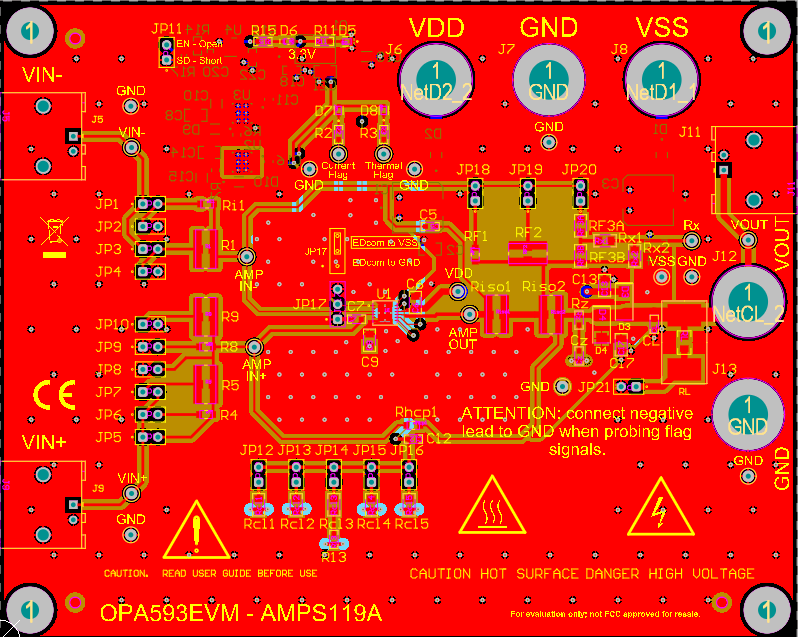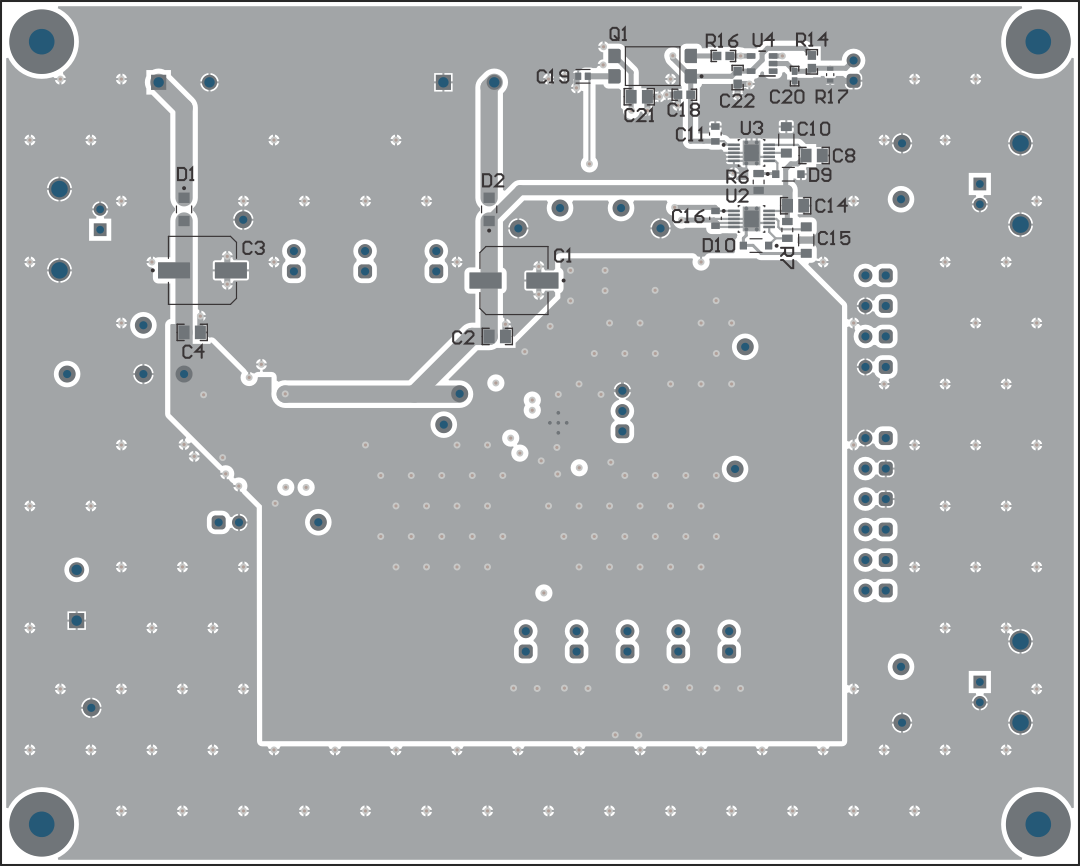SBOU268 November 2021 OPA593
- Trademarks
- 1Overview
- 2Operation
- 3Application Circuits
- 4Schematic, PCB Layout, and Bill of Materials
4.2 PCB Layout
Figure 4-3 and Figure 4-4 show the OPA593EVM PCB top-side and bottom-side views of the PCB layout, respectively.
 Figure 4-3 Top-Side View of the OPA593EVM
PCB
Figure 4-3 Top-Side View of the OPA593EVM
PCB Figure 4-4 Bottom-Side View of the OPA593EVM PCB
Figure 4-4 Bottom-Side View of the OPA593EVM PCB